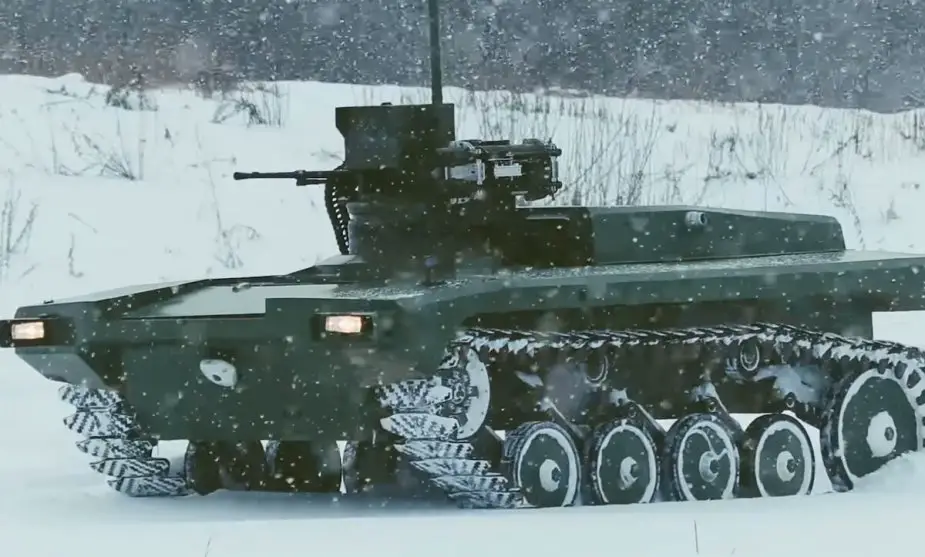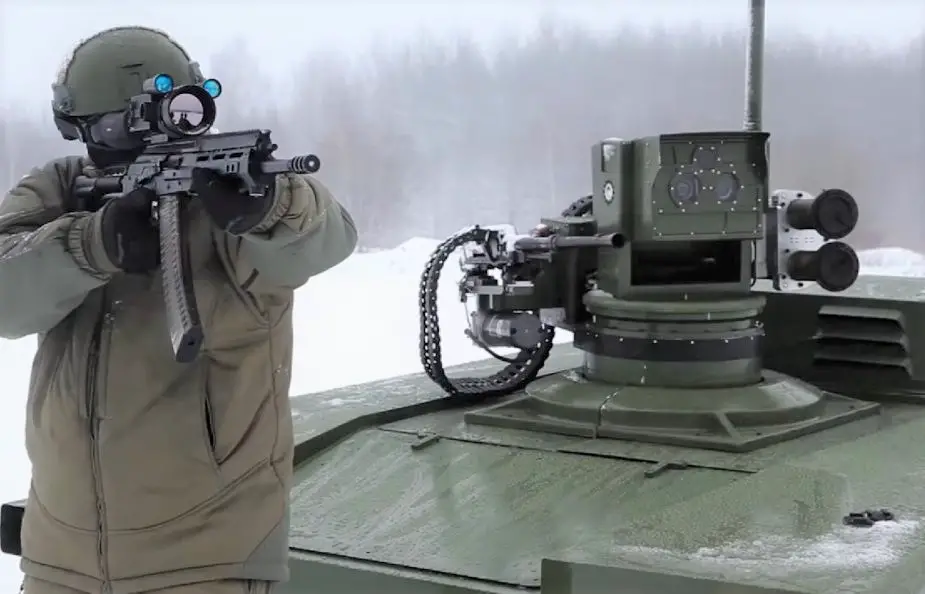Russian Marker UGV paired with infantryman and launching kamikaze drone swarms
Russia’s Advanced Research Foundation is progressing with the testing of its unmanned ground vehicles at the edge of current robotics mastery. Unveiled in December 2019, the Marker robot is a platform for exploring new military robotics technologies. Two platforms in a tracked configuration have been tested and a wheeled version is also in development.

The Marker UGV during testing in December 2019 (Picture source: Advanced Research Foundation)
The Advanced Research Foundation, Russia’s equivalent of the Defense Advanced Research Projects Agency (DARPA), opened a National Center for the Development of Technology and Basic Elements of Robotics in 2015, and this vehicle is one way it’s figuring out how to make payloads work for future armed robots.
After having already been tested for its maneuvering, tracking and firing capabilities, the Marker has also demonstrated its capability to launch a group of small reconnaissance unmanned aerial vehicles (UAVs) to perform tasks individually or together as a group via a cluster launch module. The Marker combat platform will indeed be optionally equipped with "kamikaze" type drones, Vitali Davydov, director of the Scientific and Technical Council of the Russian Foundation for Advanced Research Projects, said. Its design and testing will be completed around 2021. These are explosive-laden drones that destroy targets by crashing into them, adds Davydov. The Marker automatically launches a large number of drones. Each one can operate alone or in a group.
This variant of the Marker was tested on 25 July 2019 at the Magnitogorsk test site of robotic systems and complexes (MIP RSK). The new tests recently broadcasted by ARF were planned in Autumn 2019.

An infantryman aims and validates the target before the Marker UGV fires its machine gun (Picture source: Advanced Research Foundation)
Marker is designed to be modular, with open information architecture. One configuration for the testbed arms it with a Kalashnikov-produced machine gun and anti-tank grenade launchers. More armament combinations may be expected to be tested. What deserves to be observed in the video is the way the turret on the robot tracks a target with the rifle carried by the infantryman. In an official statement from ARF, the agency said the Marker is designed to work “in pair with a fighter, receiving target designation from the sight of his weapon,” or be controlled remotely. So, the Marker would shoot only after the accompanying infantryman has validated the target. But it could operate autonomously if programmed to do so.
A modular multispectral vision and data processing system, featuring neural network algorithms, supports autonomous operations. Other mission systems include a laser warning system, thermal sensors, day/night infrared (IR) cameras, laser rangefinder, target detection, early warning system, identification, and tracking equipment. This generates a new way of cooperation between man and robot where AI-powered sensors take aim and the human checks in before firing. It turns infantry into spotters for robots that will progress on the path of autonomy. ARF clearly sees the Marker as a learning tool, saying “the evolution of combat robots is on the path of increasing the ability to perform tasks in autonomous mode with a gradual reduction in the role of the operator."
“This sentiment and development path is in line with recent Russian statement that the country’s military is developing AI-powered weapons with the ability to identify and engage targets,” said Samuel Bendett, an adviser at the Center for Naval Analyses.


























